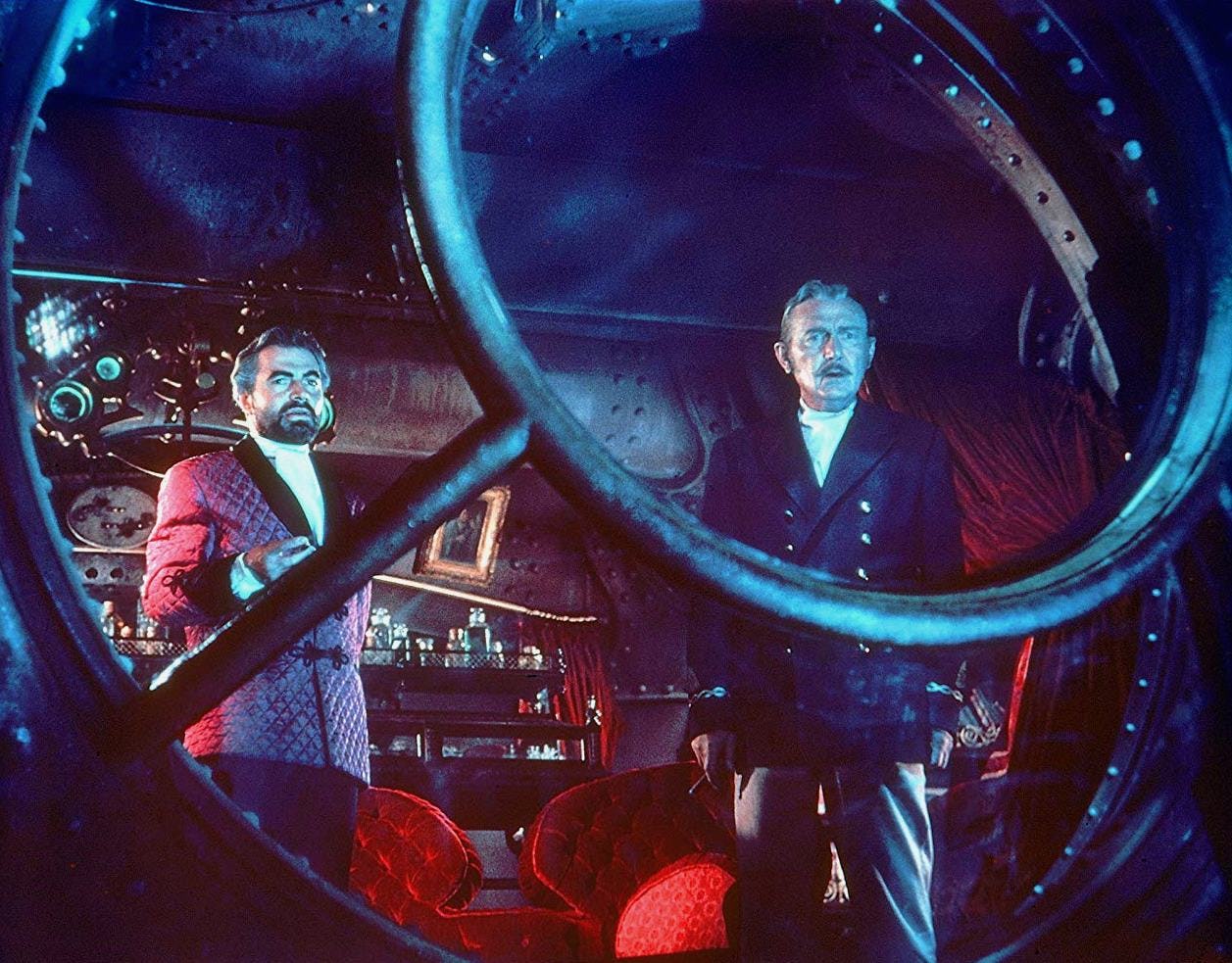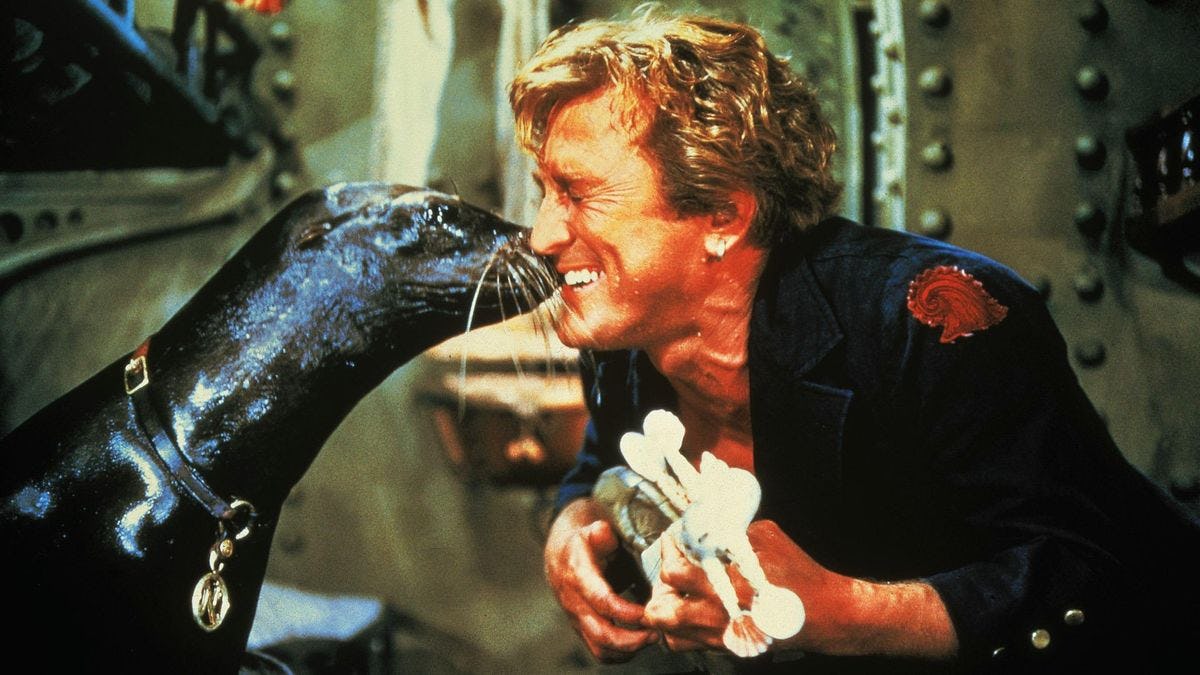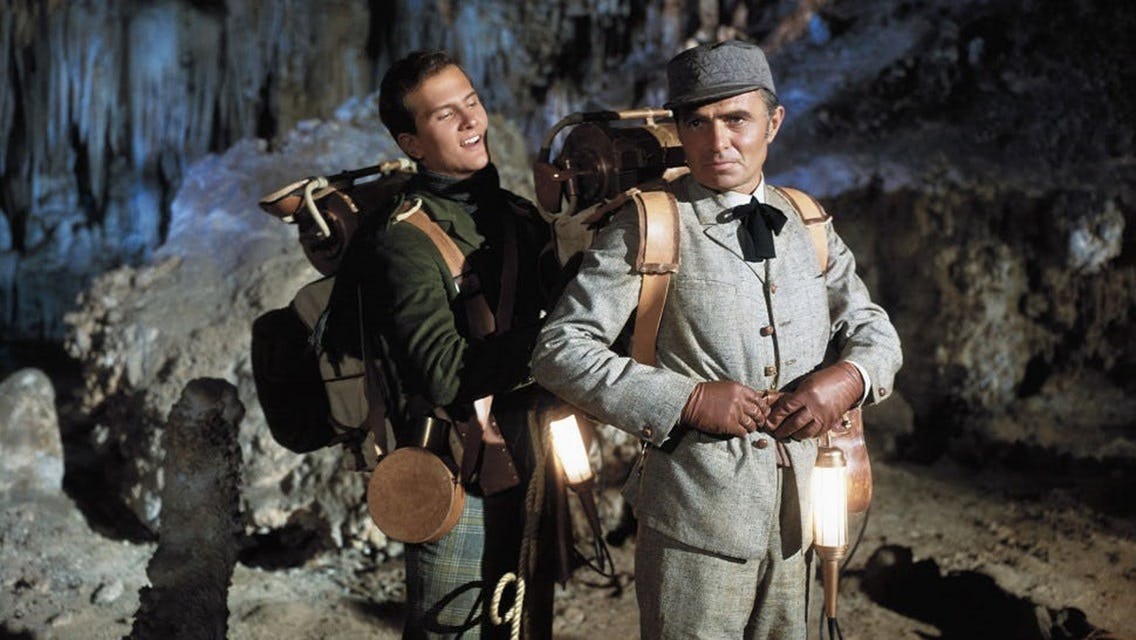
The decade stretching from the early 1950s to the start of the ‘60s was arguably the first golden age of science fiction cinema, as a quick look at even just a few of the titles released then — The Thing from Another World, The Day the Earth Stood Still, Forbidden Planet — can attest. It was also a good time for the works of two authors who’ve both been cited as “fathers” of science fiction: England’s H.G. Wells and France’s Jules Verne.
While stories from both men had been adapted to the screen almost since cinema was born — 1902’s A Trip to the Moon was inspired by Verne’s novel From the Earth to the Moon — they came into their own in the ‘50s and early ‘60s. Wells was represented by George Pal’s classic productions of The War of the Worlds (1953) and The Time Machine (1960), while seven films based on Verne’s work appeared during the same period, most notably 1954’s 20,000 Leagues Under the Sea, now celebrating its 70th anniversary, and 1959’s Journey to the Center of the Earth, just reaching its 65th birthday.
20,000 Leagues Under the Sea is still the definitive version of Verne’s classic 1869 novel, which has been filmed numerous times for both the big and small screens, while the DNA of Journey to the Center of the Earth can be found in everything from The Descent to Godzilla x Kong: The New Empire to the 2008 and 2012 adaptations (starring Brendan Fraser and Dwayne Johnson, respectively) that draw far more loosely from the book.
The Disney production of 20,000 Leagues, then one of the studio’s biggest live-action films, headlined James Mason as Captain Nemo, commander of the advanced submarine Nautilus, who captures three survivors from a ship he rams: Professor Aronnax (Paul Lukas), his assistant Conseil (Peter Lorre), and roguish harpooner Ned Land (Kirk Douglas). The trio joins Nemo on his adventures and learns about his hatred for society, as well as his relationship with the undersea world, all while battling cannibals, a giant squid, and warships sent to destroy Nemo’s secret island base.
Some aspects of 20,000 Leagues, like the cannibal island sequence and the semi-whitewashing of Nemo, are undeniably dated, while the script’s episodic nature does tend to slow it down for much of its first half. But this is still a rollicking adventure, steampunk before the term was invented, and while it diverges from Verne’s novel in several ways, it captures the essence of what might be his most famous novel. The VFX for the time are spectacular: the Nautilus is a fascinating, instantly iconic vessel inside and out, and the battle on the storm-tossed surface with the giant squid is still a breathlessly exciting scene (one that supposedly influenced Steven Spielberg’s approach to making Jaws).

The Richard Fleischer-directed film is anchored by a towering performance from Mason, whose Nemo is a commanding, brilliant, and empathetic antihero. His backstory is chilling, and his journey from a man with nothing but contempt for the world to one who sees that there could be hope for civilization is believable, even profound.
Mason also stars in Journey to the Center of the Earth, this time as Professor Oliver Lindenbrook (anglicized from Verne’s German professor, Otto Lidenbrock), who stumbles across a secret map, left behind by a Danish scientist, that allegedly leads to the center of the Earth through a volcano in Iceland. Accompanied by his student Alex (Pat Boone), an Icelandic local (Peter Ronson) and his pet duck, the widow of an explorer (Arlene Dahl) murdered by the Danish scientist’s descendant, and that villainous descendant himself (Thayer David), Lindenbrook discovers an underground world full of dinosaurs, a subterranean ocean, and other wonders.
Less dramatic than 20,000 Leagues, Journey to the Center of the Earth doesn’t have the same gravitas, since Mason’s character here is nowhere near as compelling as his Captain Nemo. But it also has something 20,000 League doesn’t: female characters, albeit ones cast in the damsel in distress and love interest molds of the time. There are also no people of color, although that might be something of a relief after watching the dozens of extras cast as stereotypical savages in 20,000 Leagues, and its visual effects don’t hold up as well, either.

Despite these shortcomings, as well as the overly wholesome presence of singer (and now-icky morality watchdog) Pat Boone, Journey is just as earnest as 20,000 Leagues in its desire to bring the adventurous spirit of Verne’s tale to the screen. It’s more colorful and light-hearted than the book in many ways (the novel can be quite eerie), but it’s another sci-fi/fantasy spectacle that pays genuine tribute to the vast imagination of the French writer.
Jules Verne’s incredibly imaginative literary voyages, which took us from the bowels of the Earth to the heights of space, fueled much of science fiction cinema during its first sustained heyday. Seven decades later, then-tentpoles like 20,000 Leagues Under the Sea and Journey to the Center of the Earth are still showing us why the genre remains among the screen’s most popular.







